Nick Scoville catches some puppy love in between waves. Location: Cascade Head, Oregon Coast. Photographer: Richard Davis, photo courtesy Saltwood Paddles.
Nick Scoville catches some puppy love in between waves. Location: Cascade Head, Oregon Coast. Photographer: Richard Davis, photo courtesy Saltwood Paddles.
Why settle for a conventional resort getaway when so many alternative adventures await intrepid travellers? Combine your love of kayaking, tropical beaches and good deeds by signing up for a service and research adventure with RED Sustainable Travel. Paddle the warm waters of Baja California, camp on tropical islands and help marine biologists with their research on adorable green sea turtles. www.seethewild.org
Share the empowering experience of paddling and wilderness expeditions by volunteering with Power to Be Adventure Therapy in Vancouver and Victoria, B.C. You’ll be joining a passionate team of volunteers with the mission of making the benefits of nature accessible to everyone regardless of barriers or disabilities. www.powertobe.ca
Want to experience the thrill of an Ironman triathlon from the comfort of your kayak? Volunteer as a safety kayaker and support world- class athletes as they race in the swimming leg of the Ironman Florida. Enjoy the pristine beaches and balmy climate, an incomparable van- tage of the race and a lively after-party. Plus, get inspired to try your own race—or perhaps be reminded why you prefer kayaking instead of triathlons! www.ironman.com
Camp Oochigeas gives kids affected by cancer the opportunity to escape into a world of outdoor adventure. With an overnight camp in Muskoka, a city-based day camp, year-round leadership program and hospital events—all run primarily by dedicated volunteers—Camp Ooch has plenty of opportunities to get involved. www.ooch.org
Looking for a cheap way to travel, connect with locals and paddle some of the most spectacular scenery in the world? Sign up as a volunteer with WWOOF (Willing Workers on Organic Farms) in New Zealand, and get access to an incredible network of farms, outdoor centers and more. Pick your hosts wisely, and you’ll not only learn new skills but also have boats to borrow—peruse the listings and choose between riverside hostels, oceanside yoga retreats and surf camps or remote home- steads accessible only by weekly mail boat. www.wwoof.co.nz
Bring your kayak, SUP or canoe and sign up for the annual Support Strokes Fundraising Paddle to support local breast cancer organizations. Take your pick of three courses, including a 15-mile circumnavigation of Alameda Island. If the San Francisco Bay Area is too far afield, find a similar event in your own community or check out national organizations such as Kayak for a Cure. www.calkayak.com
Join a shoreline cleanup—kayakers have unique access to hard-to- reach spots and can make a direct impact on the quality of our aquatic environments. And for those who like a challenge—ever tried towing an abandoned shopping cart? Pittsburgh’s Paddle Without Pollution engages hundreds of volunteers in cleanups and habitat restoration in watersheds across the Northeast. In Canada, the Great Canadian Shoreline Cleanup celebrates its 20th anniversary this year. Volunteer at spring and fall cleanups from coast to coast, or take on a leadership role as site coordinator of your local waterway. www.paddlewithout- pollution.com, www.shorelinecleanup.ca
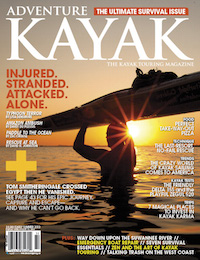 This article first appeared in the Early Summer 2013 issue of Adventure Kayak Magazine. For more great content, subscribe to Adventure Kayak’s print and digital editions here.
This article first appeared in the Early Summer 2013 issue of Adventure Kayak Magazine. For more great content, subscribe to Adventure Kayak’s print and digital editions here.
The dark skies of the wilderness are perfect for stargazing. Use the photo below to help you identify the lights in the night sky.
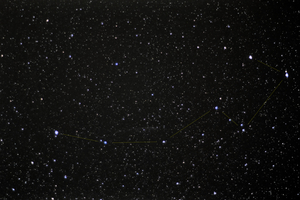
This photo was taken by Flickr user theilr and licensed under the Creative Commons.
The North Star is the tip of the handle of the Little Dipper. The Ursa Minor constellation lies in the northern sky, its name means “the smaller bear.”
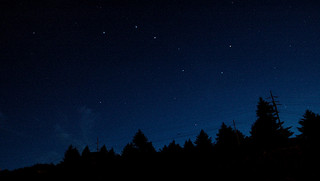
This photo was taken by jkbrooks85 and licensed under the Creative Commons.
Look for the Big Dipper in the northern sky. It looks like a big spoon, with four stars making up the bowl and three more making up the handle.
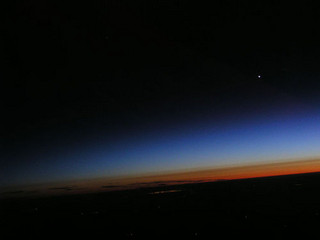
This photo was taken by Flickr user inajeep and licensed under the Creative Commons.
Even though it’s not a star at all, Venus is often called the wishing star because it’s the first starlight to appear in the sky at dusk.
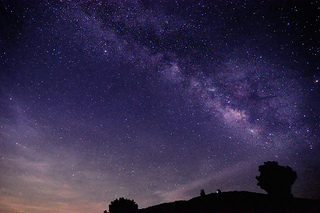
This photo was taken by Flickr user Robert Hensley and licensed under the Creative Commons.
Best seen from very dark areas, look up and find a cloud-like band across the sky—it’s made up of about 300 billion stars.
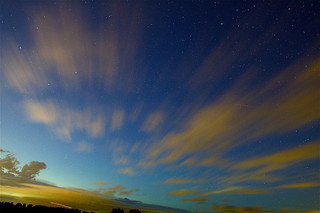
This photo was taken by Flickr user davedehetre and licensed under the Creative Commons.
Once you find the Big Dipper, draw a straight line through the two stars at the end of the bowl. Follow that line until you hit a very bright star, which is the North Star, or Polaris.
All the Sky – A Photographic Field Guide
The Night Sky App for Apple or Android
Constellation Guide: A Guide to the Night Sky
This digital extra accompanies an article that originally appeared in Canoeroots & Family Camping, Summer / Fall 2013. Download our free iPad/iPhone/iPod Touch App or Android App or read it here.
We found this so-un-hip-it-hurts image in a favorite back issue of Adventure Kayak. Discover hundreds more fascinating and funny photos in the Adventure Kayak archives here. Photo: Conor Mihell, AKv9i1
Want to see your photo here? Send to [email protected] with subject line Daily Photo.
These kayak trip destinations are excerpted from “Make Your Escape: Weekend Adventure Guide” in Adventure Kayak magazine.
Fringed by the towering peaks of the Coast Range, 20-kilometer-long Alouette Lake has a distinctly alpine feel. Golden Ears Provincial Park features three lakeside backcountry campsites for overnight trips. env.gov.bc.ca/bcparks/explore/parkpgs/golden_ears/
The chain of islands that shelters Green Bay on Lake Michigan’s western shore offers a number of options for sea kayaking. Newport and Rock Island state parks are solid choices for weekend trips. Guide to Sea Kayaking on Lakes Superior and Michigan (Globe Pequot, 1999) is your best bet for route descriptions.
In First Nations lore, the islands of Lake Ontario’s eastern end were the petals of heavenly flowers. Today, the Thousand Islands Water Trail highlights nine paddling routes from Kingston to Brockville. explorethearch.ca
A weekend trip barely ripples the surface of options for sea kayaking along this vast 350-mile-long swath of the Eastern Seaboard. Weigh the countless options at mita.org.
Every day feels like a weekend in British Columbia’s Gulf Islands National Park. Route options are endless depending on your skill and objectives, with Parks Canada boat-only campsites located on Cabbage, D’Arcy, Portland, Prevost and Rum islands. pc.gc.ca/pn-np/bc/gulf/index_e.asp
This article originally appeared in Adventure Kayak, Early Summer 2009. Download our free iPad/iPhone/iPod Touch App or Android App or read it here.